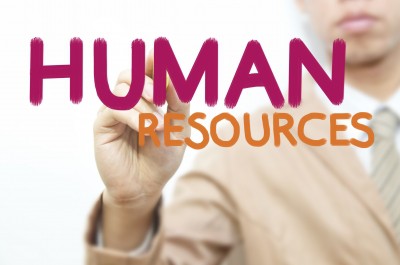
by thepeopleplan | May 17, 2012 | Uncategorized
Compensation (base pay) is the most expensive reward you offer employees yet it is not very impactful in retaining or motivating employees. (It is in attracting new employees and a factor in their decision to take your job offer). Your pay practices can also become a major de-motivator if employees feel that they are not paid fairly compared to other workers.
The problem:
- Surveys find that about half of employees do not know how their compensation is determined.
- Many organizations say that they “pay for performance” yet a top performer might receive a 4% raise instead of a 3% raise—not exactly providing a meaningful difference to reward extra effort.
- Incentive plans often create unintended consequences of discouraging teamwork, encouraging behaviors that do not serve the customer, or become an expected entitlement and not a motivator or perceived reward for great performance.
The solution:
Many theories of motivation and business authors (Dan Pink, Brad Ham) share the philosophy of Total Rewards—provide fair and market competitive wages and then provide the other Rewards to engage your staff. (See our series on 13 Total Rewards in the Rewards category of our blog).
As for incentives (variable pay), these plans need to be carefully designed and communicated so that they align individual effort with business goals and then share a reasonable part of the gain. Give employees an upside when they and the organization does well and you protect your bottom line for the lean times.
Contact us to learn more about the WNY Compensation & Benefits Survey to benchmark your organization to others in the region.
Image courtesy of Stuart Miles at FreeDigitalPhotos.net

by thepeopleplan | May 2, 2012 | Uncategorized
Seth Godin- post 3/26/12:
Unhappiness compounds. Unaddressed, it compounds into frustration.
And frustration is the soul killer, the destroyer of worker and customer relationships, loyalty and progress.
The solution is pretty simple: address the unhappiness. Change the system or talk about the problem or acknowledge it if that’s all that can be done.
None of this can happen, though, unless there’s communication. Most open door policies are window dressing. Most, “is everything okay with your dinner?” is rote.
True communication, actual intention (and action) in digging deeper, is difficult work. If it doesn’t feel like you’re working at it, you’re probably not doing it right.
Link to Seth Godin post “Speechless”
Is there an employee who is clearly not happy at work? Do you have two peers who are not getting along?
Ignoring the issues will not make them go away—at some point one or more employees will decide to leave your firm (and possibly a great employee).
We know that co-workers can be irritating at times and that differences in opinions occur – it is how we communicate and resolve those differences that matters to your organization’s climate.
Contact us to find out more about a framework to uncover the issues and resolve them in a positive way.
Image courtesy of stockimages at FreeDigitalPhotos.net

by thepeopleplan | Apr 26, 2012 | Uncategorized
If pay were the only reason employees worked, only the highest-paying employer would have staff and no one would work at not for profits!
Employees look at more than just compensation when they consider a job offer or when they consider leaving your organization—they look at “Total Rewards”.
These are all the rewards elements of a job that impact an employee’s satisfaction with the job, and the key to find, keep and motivate more Right People on your staff.
The “Best Places to Work” are rated this way because they provide a Total Rewards package that employees find favorable.
A flexible and customized Total Rewards package allows your organization to attract, retain and reward top performers – which provides a competitive advantage for your organization.
Don’t just take our word for it!
According to Aon Hewitt’s global Best Employer report “research reveals how organizations differentiate and achieve a competitive advantage through their people. The benefits of being a Best Employer are well documented, from improved retention to increased productivity. Best Employers are distinguished by high levels of employee engagement, which results in lower turnover, larger talent pools, and better financial performance.
Organizations with high levels of engagement to outperform the stock market index with returns 22% higher than average; companies with low engagement had returns 28% lower than average.”
Link to full Aon Hewitt report on Employee Engagement
Consider more than your base pay: 
Employers often look at compensation as the main (and most expensive) element to achieve employee satisfaction—but there is a multitude of research that the quality of manager- employee interaction is far more important to employee satisfaction and retention (among 11 other rewards).
For example, according to a recent study by the Total Rewards organization World at Work, recent college graduates rate pay as #5 in importance, behind opportunity, flexible work hours and a friendly work environment.
How do you find out if employees are satisfied with your Rewards—you ask them! The best way to measure changes in employee satisfaction and engagement is to conduct an annual Total Rewards survey. If you have different locations or shifts the results can be summarized to if there are any meaningful differences among groups of workers (there usually are). This allows you to provide a flexible Total Rewards package that appeals to different types of workers with different interests.
Contact us to receive a free article on the Total Rewards model, and process to identify employee needs and develop a custom and flexible Total Reward program for your unique organization.
Image courtesy of scottchan at FreeDigitalPhotos.net

by thepeopleplan | Apr 19, 2012 | Uncategorized
Let us take a moment to describe what Human Resources Management really is.
Most people think of the administrative side of “HR,” that department that handles payroll and benefits and record keeping. While important, HR administrative does not make you any money (actually costs you money to maintain) and does not help you improve your business or profits.
The strategic side of Human Resources Management is defining and using processes to make sure you have the Right employees, doing the Right things, and that they do them Right. Then we need to keep these Right People engaged and reward them! This concept is really what Performance Management is all about (so much more than an “annual review”)- managing employee performance for organization goal achievement.
What your managers should be doing:
- Explain performance expectations to each employee (and how they can support organizational goals)
- Get employee commitment to meet expectations
- Measure performance and share with employees
- Give feedback and coach employees to improve performance
- Recognize and reward good performance
- Build a culture and a team that works together to achieve organizational goals
What your organization needs to define and communicate:
- Overall organizational strategy, values, culture
- Specific goals by department and job
- Performance expectations for each job (tied to organizational goals)
- Measurements of performance by individual, team, department, entire organization
- HR systems to assist with recruiting, selection, training, management for employee success
- Total Rewards strategy that attracts, retains and engages top performers
- Manager coaching and resources to do all of the above
The above elements are what all large organizations have – but small organizations can have these as well with the People Plan™ . This is a four-phase process to identify your custom People strategy and then implement People systems to allow your organization achieve its goals. Contact us to receive our free white paper on the 9 steps to build a People Plan.
Image courtesy of basketman at FreeDigitalPhotos.net

by thepeopleplan | Apr 11, 2012 | Uncategorized
“It’s poorly designed and executed processes that suck up large amounts of money, time, and energy – and ultimately lead to a frustrating employee and customer experience.”- Verne Harnish (MIT professor and founder of Gazelles and Entrepreneurs’ Organization).
The challenge: A small global distribution company experienced growth pains in their operations department—an increase in sales caused customer service representative to be overloaded, resulting in slow rate quotes and declining percent of shipments booked.
Many companies could easily solve the problem by hiring a few more customer reps. But the unique processes of this organization made it difficult for new employees to succeed in a fast paced and complex position. In fact, they often remark that an employee with “only two years here is relatively inexperienced.”
The Solution– How we re-designed the People process:
- Analyze duties: Conduct job analysis by interviewing employees and supervisors
- Process map: Review overall department workflow and document with process map
- 3 jobs into 1: Re-organize three distinct “job descriptions” into cross functional teams with 3-4 members doing the same “job” with complimentary skill sets
- Team Leaders: Identify and train new team leader position – to assign work, cross train, coordinate workflow across 3 teams that service different regions
- Next steps: train team leaders to create formal development plan for each member of team to further improve skills levels and customer support levels
The Result: After one month of implementing this People Plan™ solution—the percent of rate quotes booked rose 40%!
What results could your team reap from a similar People process improvement?
Read Verne Harnish’s full article: Process Vs Function
Image courtesy of Stuart Miles at FreeDigitalPhotos.net

by thepeopleplan | Apr 3, 2012 | Uncategorized
Do employees like their jobs? Why should owners and managers care?
Quote: “More than 100 top-level executives at Sears, Roebuck and Co. spent three years rebuilding the company around its customers. In this excerpt from their article in the Harvard Business Review, three members of the Sears team discuss the new business model based on new measurement techniques and the realization that “there is a chain of cause and effect running from employee behavior to customer behavior to profits.” –Harvard Business Review “The Employee-Customer Profit Chain” October 1998
The work by Sears over a decade ago clearly shows that when employees are “engaged” in their jobs it makes a BIG financial impact on the business. Sears built a “compelling place to work” to then create a “compelling place to shop” and turned around Sears to become a “compelling place to invest.” (Ten years ago the stock was trading under $15 a share, April 2012 stock price is $68 a share).
How do you get Engaged employees?
Engagement comes from multiple sources but the key three elements are:
- Aligning employee activity and results with organizational goals
- Regularly communicating core values and mission to employees
- Providing development and advancement opportunities
Quick engagement survey
Ask yourself these three questions:
- Does every employee show up on Monday morning knowing how she can help achieve the quarterly and annual business plan?
- Can every employee state the organization’s values and mission (and as a bonus, do they demonstrate these values and believe in the mission)?
- Does every employee have a personalized development plan?
If you cannot emphatically answer “YES” to each of these three questions, you need a People Plan™
Read the Harvard Business Review article here: “The Employee-Customer Profit Chain”
Diana Southall is a fifth generation entrepreneur, and creator of the People Plan toolkit.™ Her firm specializes in coaching small business owners and managers to build, engage and reward a fabulous team!
You can start working with Diana with free members-only access to People coaching resources, including informative video training, articles, time saving documents and templates. Join the FREE membership club here.
Image courtesy of stockimages at FreeDigitalPhotos.net










